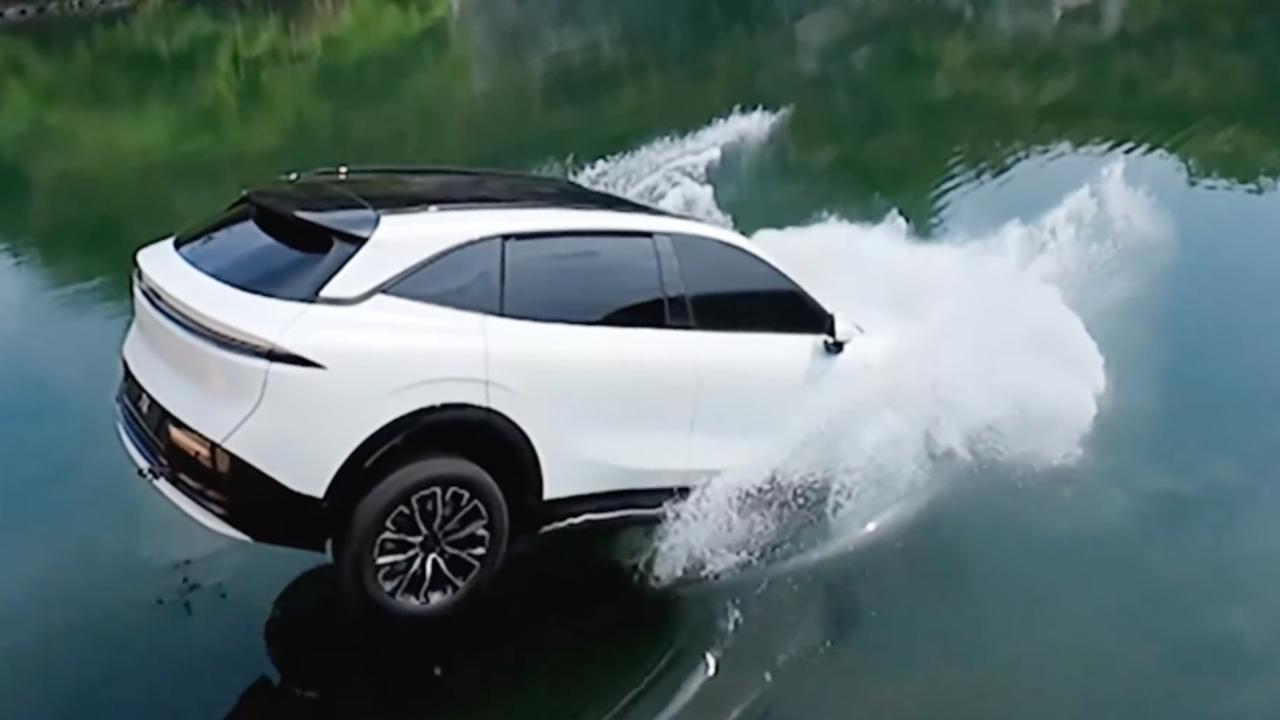By James Chung
Zeekr, a new electric vehicle brand, has developed a safety device that allows occupants to escape from a submerged vehicle.
But the technology will only be offered in left-hand-drive markets, such as China, for now.
Zeekr’s decision to deny Australian drivers new safety tech comes as a rising number of motorists fall victim to floodwater.
Dr Francois Flocard, director of industry research at UNSW’s Water Research Laboratory, said “the number of fatalities in vehicles has increased in the last 15 years”.
“The feature you mentioned is interesting and definitely can help people”, Dr Francois said.
“By the time water crosses the window, it’s already very dangerous and almost too late.”
MORE: Aussies ‘shafted’ in cops’ AI move
Zeekr’s tech a world first.
It works with a lever tucked away near the driver’s knees. A quick tug of a cable activates a window-breaking hammer within the driver’s door that strikes the bottom of the window glass.
Once triggered, the hammer can displace up to 3,000 newtons of force to shatter the window.
This is approximately 33 times the impact strength of a typical safety hammer, equivalent to the force of five adults simultaneously smashing into the window.
More than 100,000 vehicles across Australia are equipped with electric door handles which may fail to operate when submerged in water.
Earlier this year, it was revealed that not all vehicles have a manual door release mechanism as a backup in the event of a power failure.
Power-operated doors use a car’s 12-volt battery – not the high-voltage battery used to power electric cars – to enable occupants to exit the vehicle with the press of a button.
If the car’s 12V battery dies or gets disconnected after an impact, occupants must use a manual door release function to exit the vehicle quickly.
MORE: Billionaire’s EV nightmare for Tesla
Vehicle safety body ANCAP recently added vehicle submergence to its safety assessment criteria, a move aimed at helping first responders access trapped occupants and ensuring safe egress during flooding events.
Carla Hoorweg, ANCAP’s chief executive, said, “in recent years, we’ve seen a number of significant flooding events across Australia”.
“The number of new vehicle models fitted with electric door opening is also increasing,” she said.
“Combined, these aspects highlight the strong need for this emergency access capability to help prevent unnecessary loss of lives.”
When a car is submerged, water pressure makes it nearly impossible to open the doors. Additionally, electric door and window switches may also fail.
ANCAP awards points in the Adult Occupant Protection assessment for vehicles equipped with effective submergence countermeasures.
Manufacturers may offer alternative methods to open windows if standard measures are not demonstrated.
MORE: Car world rocked as EV aims ‘to replace Tesla’
Emergency glass hammers are an alternative means of egress that car manufacturers can opt to implement during ANCAP testing.
Professor Giesbrecht, a world-renowned expert in vehicle submersions based in Canada, said the biggest danger isn’t water – it’s time.
“You get people who are awake and functional who drown because they don’t know how to escape,” he said.
Many people make the mistake of believing their car will protect them or that waiting for help is the safest option.
But in a flood event, even emergency services can’t respond in time.
So Zeekr’s groundbreaking solution offers a potential lifeline in these situations.
Unfortunately, the brand can’t justify a compelling business case to introduce this safety technology in Australia.
And it is a decision that highlights a concerning trend in the current automotive market.
Car makers are engaged in an intense EV price war in Australia due to excessive production levels.
Unfortunately, this means every dollar counts, and manufacturers can’t always justify including features that push up prices for consumers.
– with David McCowen
